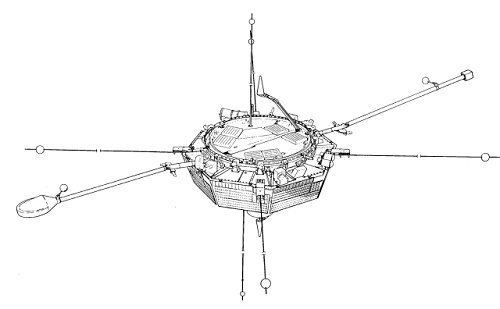Launch date 22 February 1986 | ||
 | ||
Similar Freja, Astrid, Azur, Dynamics Explorer, Bulgaria 1300 | ||
Viking was Sweden's first satellite. It was launched on an Ariane 1 rocket as a piggyback payload together with the French satellite SPOT 1, on February 22, 1986. Operations ended on May 12, 1987. Viking was used to explore plasma processes in the magnetosphere and the ionosphere.
Contents
Spacecraft
Space was limited underneath the SPOT 1 satellite, and Viking had to be quite sturdy in order to withstand the stress of launch. The basic shape of the Swedish satellite was a flat octagonal disc, 0.5 metres thick and 1.9 metres across. The mechanical interface of the payload adapter from the Ariane rocket was duplicated on top of Viking. This enabled it to be added to the launch with a minimum of redesign of the SPOT satellite. After SPOT had been released, Viking fired its own rocket engine and was sent into its proper polar orbit.
Mission
Once in orbit, 4 wire segments of 40 metre length each were spooled out in a radial direction from the edge of the spinning satellite disc. Also, 2 stiff rods of 4 metre length were extended in the axial direction. A sensor pod was stationed at the end of each of these, forming three orthogonal pairs. Together they could measure the electric field of the earth in all three dimensions. Stiff booms were also extended for other types of sensors and antennas.
The mission produced a large amount of extremely useful scientific data, and was deemed a great success. An initial discussion of what scientists learned from these measurements, which included "global distribution of magnetosphere-ionosphere interaction; auroral morphology and substorm dynamics; heating and expulsion of ionospheric plasma into the magnetosphere; field aligned acceleration into the ionosphere; and electron and ion wave generation" can be found in the article "Scientific results from the Swedish Viking satellite", 1988 Swedish Inst. of Space Physics, Kiruna. Since then, many other scientific articles have been written using this important data set.
Post mission
After the scientific mission ended, both Viking and the upper stage of the rocket used to launch the satellite became derelict objects that would continue to orbit Earth for many years. As of September 2013, both objects remain in orbit.
